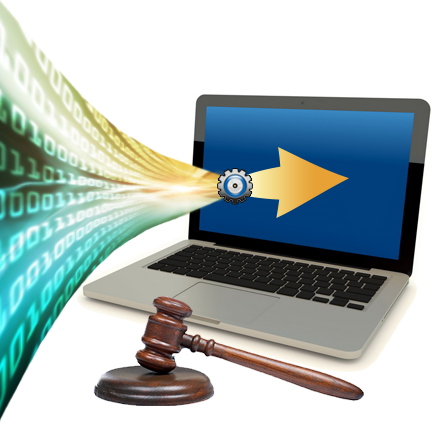 Can you imagine if that headline was about you? How would that impact your organization and your fundraising career? Would it be fatal or a blip in the radar?
Can you imagine if that headline was about you? How would that impact your organization and your fundraising career? Would it be fatal or a blip in the radar?
I’m an emotional person. Because of this I could easily spend hours chatting about the law and ethics. But when I talk with a highly analytical, logical person, the conversation is usually quite short. Is it legal? Is it public? What’s the problem? Emotions! That’s what!
No matter what your personality type, the only thing that really matters is what your donors and the community believe. Because if they perceive that you have done something unethical and possibly illegal it can be very damaging to your fundraising revenue, not to mention the organization as a whole.
Sarah Bernstein did a very good job of examining the APRA Social Media Ethics Statement so I won’t go over that here. Instead I’d like to have a very specific conversation evaluating a specific situation – scraping on LinkedIn.
Scraping LinkedIn
I’m not starting this conversation. That already happened on the PRSPCT-L list-serv. You can search the archives for these threads:
- Using Scraper with LinkedIn
- Experience with ProspectVisual’s LinkedIn Alumni Employment Info?
- INFO: LinkedIn.com and permitted uses
As a prospect research professional I would love to have a way to get all that wonderful LinkedIn data in a format that I could use for analysis!
According to Wikipedia, Web Scraping is a software technique that simulates human exploration of the web and transforms unstructured data on the web, typically in HTML format, into structured data that can be stored and analyzed in a central local database or spreadsheet. Because it is automated the software can process large amounts of information.
An example of successful scraping we take for granted are the giving databases we subscribe to. We know that the vendor scours the web for giving recognition reports and other public information about giving. The vendor indexes the information and we merrily search the resulting database.
LinkedIn Public Profiles
The first question in the LinkedIn Scraping discussion is whether the information being scraped is from the outside of the service – the public-facing side – or whether it is being scraped from behind the login – the private-facing side.
ProspectVisual, a relationship mapping software, scrapes LinkedIn data from the public-facing side. ProspectVisual never logs in to the software. It doesn’t have to. For example, my LinkedIn profile is almost 100% public. You can find my LinkedIn profile on a Google search and never login.
At the very beginning of the LinkedIn User Agreement in Section 1.2 it states:
You agree that by clicking “Join Now” “Join LinkedIn”, “Sign Up” or similar, registering, accessing or using our services…you are entering into a legally binding agreement.
ProspectVisual never enters into the agreement. That’s quite clear and simple from a legal perspective. And given the prospect research field’s warm embrace of many other vendors who scrape the web, it would seem it passes the ethical test too.
LinkedIn Private Profiles
Once you login to LinkedIn you are now bound by the LinkedIn User Agreement. A search in the agreement for the word “scrape” brings up this line under Section 8.2, the things you promise NOT to do:
Scrape or copy profiles and information of others through any means (including crawlers, browser plugins and add-ons, and any other technology or manual work);
The question on the list-serv was whether it was okay to login and scrape small amounts of data for the purpose of identifying new prospects for the nonprofit organization.
Illegal
It could easily be argued that this scraping is illegal and violates the user agreement because scraping, automated or manual, implies taking a bulk of data from LinkedIn and transferring it for another purpose.
Legal
But how much data or at what frequency crosses the line into scraping territory? And if you are not scraping information to re-sell it, but instead to further your fundraising, is that a use that is either appropriate or unlikely to be prosecuted?
Ethical or Unethical?
If it is unclear whether our scraping data when bound by the user agreement is illegal or not, is it ethical to continue scraping? How would our donors and network feel about the way we are accessing the data they have placed behind the LinkedIn login?
Healthy Conversation
Ethics stirs emotions. But that doesn’t mean we can’t engage in healthy conversation. I was delighted that the most recent thread had all the hallmarks of a mature debate:
- Asking lots of questions
- Making statements based on found information, not pure emotion
- Not disagreeing quickly, but working to be sure you understood the other person
- Recognizing that others may disagree in part or in whole and that’s okay
Now at your next staff meeting you have a juicy topic to bring up under “New Business”. And if you are a blogger, maybe there’s a piece of this conversation you’d like to take on?
More Articles You Might Like
- Is it Ethical to Gather Social Data for Prospect Research? | by S.Bernstein (2014)
- Collecting Data from the Web – Is it Legal? | by ProspectVisual (2014)
- APRA’s Social Media Ethics Statement
- LinkedIn User Agreement
- LinkedIn Sues After Scraping Of User Data | by InformationWeek (2014)
- Company pays $40k settlement for allegedly scraping LinkedIn Corp’s user data | by Lexology (2014)
- Recruiting Co. Settles LinkedIn Data-Scraping Suit | by Law360 (2014)